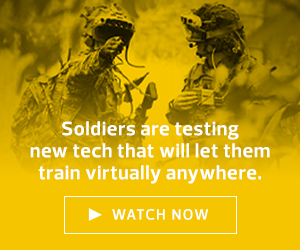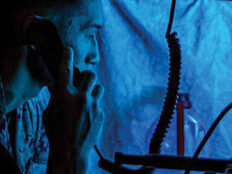Serving six years in the Air Force allows you to learn many things, from tactical and strategic thinking to operational management.
I always had a passion for technology, and I saw firsthand the challenges users faced while working in secure environments. I also saw the potential that technological advancements and solutions can have in secure government sectors.
EXPLORE: See how the Navy uses VR to train aircraft carrier crews.
Emerging Tech in Secure Environments
Virtual reality is rapidly revolutionizing how organizations conduct business today, and there are many compelling benefits and reasons to invest in VR. Forward-thinking organizations are using VR in various capacities, including to better retain and motivate their employees and craft immersive training environments where teams can learn by doing to maximize the return on investment.
While government use of VR is still in its infancy, there’s a lot of appetite for innovation using the technology. Use cases for VR in government have proliferated over the years and continue to grow as agencies adapt many of the best practices deployed in the private sector for use in data visualization, manufacturing and training, among other applications.
Data Visualization: Imagine being able to quickly turn many pieces of disparate data into a single, real-time view to improve predictability. For example, planning for a dignitary flying into a specific location means tracking information such as weather, traffic patterns and threat assessments. That means a user must digest and plan amid all of these varying elements, which can be complicated and even overwhelming when processed separately. When dealing with this much disparate data, having the whole picture at any given time is critical and helps to reduce risk.
Secure Manufacturing: VR can reduce the cost of operations, eliminating the need for things such as physical prototypes so products go into the field faster, a key competitive advantage. Building virtual designs and mock-ups and having the ability to experience and more quickly make modifications in VR is profoundly impacting the entire design process. This is true for Bell Helicopter, which is using VR to visualize a full-scale model right from the beginning.
Test pilots can experience the aircraft as if they were inside an actual model, allowing them to provide faster and more specific feedback. In turn, engineers can make adjustments to the design based on critical success factors such as visibility, access, safety, comfort and more, greatly reducing the overall design cycle.
Military Training: Government entities are increasingly looking to engage and train their employees in new and more effective ways than the traditional lecture-based approach. VR can accelerate learning and comprehension of critical information, increasing the effectiveness of training programs and the safety of employees in higher-risk environments, such as in a refueling scenario.
The U.S. Army’s Training and Doctrine Command’s Enterprise Classroom Program is designed to train soldiers by shifting from lecture-based instruction to active-learning and VR environments in the military occupational specialties training areas, which are offered to more than 600,000 soldiers annually.
Challenges to Adoption of VR in Government
Leveraging VR reduces costs and time spent on various tasks and initiatives, providing a greater return on investment compared with other technologies and approaches. So, why aren’t more organizations in the government sector using VR?
While some may be hesitant about adopting advanced technology due to the onboarding time required with a new technology, the major barrier to any wireless communications technology adoption for organizations that require authority to operate (ATO) is access to hardware that meets specific security and privacy requirements.
Government leaders see the benefits, but security limitations have historically prevented VR from being a viable option.
Giving VR Authority to Operate in Government
Since 2016, my team has coordinated with numerous federal government organizations to understand the opportunity available with room-scale VR, as well as to address the key barriers to adoption. To address those concerns, we have been working with agencies to develop and validate a VR headset capable of receiving ATO in secure environments. It is now operating in a wide range of secure environments across the country.
These solutions should offer physical hardware modifications to remove wireless communications and allow for installation in a secure environment without connecting to the internet. Today’s headsets provide increased mobility compared to current CAVE Automatic Virtual Environment solutions, allowing users to fully immerse themselves in a virtual environment with fewer limitations.
John Grant, a technology manager for a leading defense agencies and manager of the quarterly Virtual Worlds Forum, is involved with the work in bringing secure and compliant VR solutions to the government, working closely with us and other original device manufacturers. In a press release on the distribution of the VIVE Pro Secure headset in North America, Grant explained that “for years, various U.S. government agencies have identified impactful use-cases and applications for room-scale VR experiences, but often found themselves unable to leverage those capabilities in government facilities due to the security concerns related to wireless communications devices.”
Focused on exploring new technology capabilities to enhance different mission areas, Grant understands the need to identify opportunities of common interest to reduce the resource burden and increase adoption of VR across secure environments.
New technology to solve old problems can lead to innovation and big ideas. VR is a transformative technology that can help organizations design and develop faster and more effectively, which is vital to our national security.
MORE FROM FEDTECH: Discover how virtual reality can enhance military training and treat trauma.
U.S. Army













